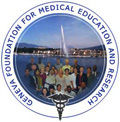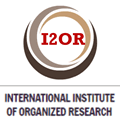Conceptual evolution of autism spectrum disorder according to diagnostic classifiers
Keywords:
trastornos del espectro autista; clasificadores diagnósticos; pautas diagnósticasAbstract
Introduction: The first autistic profile was described by John Langdon Down in 1887, based on the observation of delayed cognitive development and autistic characteristics in children. Since then, conceptualizations have been established, leading to a definition currently based on a broad spectrum of the disorder.
Objective: To review the different classifications according to the Diagnostic and Statistical Manual of Mental Disorders and to understand the breadth of the diagnosis currently available.
Methods: A narrative literature review was conducted from January to July 2023, through a search of bibliographic databases such as PubMed, Lilacs, Google Scholar, and Cumed. Descriptors in English and Spanish were used.
Result: Arguments are presented on the scientific basis found in the literature, allowing for an interpretation and analysis of the key elements related to the diagnosis and the criteria established according to the evolution of the manual, which facilitated understanding why the disorder is currently more prevalent.
Conclusions: Over the years, attention has focused on the same affected areas and the origins of the main manifestations; however, the nomenclature of the disorder has changed, and the criteria have been relaxed to accommodate a greater number of cases with autism spectrum disorders. Similarly, the latest classifier takes into account additional criteria that offer the possibility of more integrative care for each patient.
Downloads
References
1. American Psychiatric Association. Diagnostic and Statistical Manual of Mental Disorders. 5th ed. Washington DC: APA; 2013 [citado 10/01/25] Disponible en: https://www.psychiatry.org/psychiatrists/practice/dsm
2. Kanner L. Infantile Autism and schizophrenias. Behav Sci [Internet]. 1965 [citado 10/01/25]; 10(4): [aprox. 2p.]. Disponible en: https://onlinelibrary.wiley.com/doi/abs/10.1002/bs.3830100404 https://doi.org/10.1002/bs.3830100404
3. Bleuler E. Dementia praecox or the group of schizophrenias. Monograph series on schizophrenia. Vol 1. New York: International University Press; 1950 [citado 10/01/25] Disponible en: https://books.google.com.bo/books/about/Dementia_praecox_or_The_group_of_schizop.html?id=mXV9AAAAMAAJ
4. Kanner L. Autistic disturbances of affective contact. Acta Paedopsychiatr [Internet]. 1968 [citado 10/01/25]; 35(4): [aprox. 3p.]. Disponible en: https://pubmed.ncbi.nlm.nih.gov/4880460/
5. American Psychiatric Association (APA). Diagnostic and statistical Manual of mental disorders. Washington, DC: APA; 1952 [citado 10/01/2025]. Disponible en: https://www.turkpsikyatri.org/arsiv/dsm-1952.pdf
6. American Psychiatric Association (APA). Diagnostic and statistical Manual of mental disorders, 2nd Edition. Washington, DC: American psychiatric Association; 1968 [citado 10/01/2025]. Disponible en: https://www.scirp.org/reference/referencespapers?referenceid=947107
7. American Psychiatric Association (APA). Diagnostic and statistical Manual of mental disorders. 3rd ed. Washington, DC: APA; 1980 [citado 10/01/2025]. Disponible en: https://www.scirp.org/reference/referencespapers?referenceid=947108
8. American Psychiatric Association (APA). Diagnostic and statistical Manual of mental disorders. 4th ed. Washington, DC: American psychiatric Association; 2000 [citado 10/01/2025]. Disponible en: https://www.scirp.org/reference/referencespapers?referenceid=2182002
9. Jinan Z, Fobonne E, Scorah J, Ibrahim A, Durkin M, Saxena S, at al. Global prevalence of Autism: A systematic review update. Autism Research [Internet]. 2022 [citado 10/01/2025]; 15(5): [aprox. 2p.]. Disponible en: https://pubmed.ncbi.nlm.nih.gov/35238171/
https://doi.org/10.1002/aur.2696
10. Baio J, Wiggins L, Christensen DL, Maenner MJ, Daniels J, Warren Z, et al. Prevalence of Autism Spectrum Disorder Among Children Aged 8 Years — Autism and Developmental Disabilities Monitoring Network, 11 Sites, United States, 2014. MMWR Surveill Summ [Internet]. 2018 [citado 20/01/2025]; 67(6): [aprox. 3p.]. Disponible en: https://pubmed.ncbi.nlm.nih.gov/29701730/
https://doi.org/10.15585/mmwr.ss6706a1
11. Hervás A, Rueda I. alteraciones de conducta en los trastornos del espectro autista. Rev Neurol [Internet]. 2018 [citado 20/01/2025]; 66 (S01): [aprox. 3p.]. Disponible en: https://www.neurologia.com/articulo/2018031
https://doi.org/10.33588/rn.66S01.2018031
12. André TG, Valdéz Montero C, Ortíz Félix RE, Gámez Medina ME. Prevalencia del trastorno del espectro autista: una revisión de la literatura. Rev Jóvenes en la Ciencia [Internet]. 2020 [citado 14/01/2025];7: [aprox. 3p.]. Disponible en: https://wwwjovenesenlaciencia.ugto.mx/index.php/jovenesenlaciencia/article/view/3204
13. Rattray D. La psiquiatría de Kraepelin en la era pragmática. HPLS [Internet]. 2022 [citado 14/01/2025]; 44(1): [aprox. 3p.] Disponible en: https://link-springer-com.translate.goog/article/10.1007/s40656-021-00480-w?error=cookies_not_supported&code=a041f283-147a-43f1-aab1-c3c221da52fb&_x_tr_sl=en&_x_tr_tl=es&_x_tr_hl=es&_x_tr_pto=tc#citeas
https://doi.org/10.1007/s40656-021-00480-w
14. Barrio V. Raíces y evolución del DSM. Revista de historia de la psicología [Internet]. 2009 [citado 21/01/2025]; 30(2-3): [aprox. 2p.]. Disponible en https://dialnet.unirioja.es/descarga/articulo/3043153.pdf
15. Romero Torres JM. La psiquiatría militar alemana en la segunda guerra mundial. Artículo histórico. Rev sanid mil [Internet]. 2018 [citado 15/01/2025]; 72(3-4):[aprox. 3p.]. Disponible en: https://www.scielo.org.mx/scielo.php?script=sci_arttext&pid=S0301-696X2018000300264
16. Delgado Reyes AC, Agudelo Hernández AF. Trastornos del neurodesarrollo: una comparación entre el DSM-5 y la CIE-11. Psicoespacios [Internet]. 2021 [citado 15/01/25]. Disponible en: https://dialnet.unirioja.es/servlet/articulo?codigo=8629451
17. Jaramillo Arias P, Sampedro Tobón ME, Sánchez Acosta D. Perspectiva histórica del trastorno del espectro del autismo. Acta neurológica colombiana [Internet]. 2022 [citado15/01/2025]; 38(2): [aprox. 3p.] Disponible en: https://www.scielo.org.co/scielo.php?script=sci_arttext&pid=S0120-87482022000300091
https://doi.org/10.22379/24224022405
18. Carbone NC, Piazze GP. Traducir a Kanner. La originalidad de un clásico en el campo del lenguaje autista. Rev perspectivas actuales en el estudio del desarrollo temprano. 2023 [citado 15/01/2025]; 22(1): [aprox. 3p.] Disponible en: https://revistas.unlp.edu.ar/revpsi/article/view/14805
https://doi.org/10.24215/2422572Xe162
19. Moskowitz A, Heim G. Eugen Bleuler’s Dementia praecox or the group of schizophrenias (1911): a centenary appreciation and reconsideration. Schizophr Bull [Internet]. 2011 [citado 15/01/2025]; 37(3): [aprox. 2p.]. Disponible en: https://pubmed.ncbi.nlm.nih.gov/21505113/
https://doi.org/10.1093/schbul/sbr016
20. Rodgaard E, Jensen K, Vergnes J, Soulières I, Mottron L. Temporal changes in effect sizes of studies comparing individuals with and without autism: A meta-analysis. JAMA Psychiatry [Internet]. 2019 [citado 15/01/2025]; 76(11): [aprox. 2p]. Disponible en: https://pubmed.ncbi.nlm.nih.gov/31433441/
Downloads
Published
How to Cite
Issue
Section
License
Copyright (c) 2025 Iris Dany Carmenate Rodriguez, Sorahy Zoila Santander García, Arnel Antonio Rodríguez Cordero

This work is licensed under a Creative Commons Attribution-NonCommercial 4.0 International License.
Authors who have publications with this journal agree to the following terms:
- Authors will retain their copyright and assign to the journal the right of first publication of their work, which will simultaneously be subject to a Creative Commons License / Attribution-Noncommercial 4.0 International (CC BY-NC 4.0) that allows third parties to share the work as long as its author and first publication in this journal are indicated.
- Authors may adopt other non-exclusive license agreements for distribution of the published version of the work (e.g., depositing it in an institutional repository or publishing it in a monographic volume) as long as the initial publication in this journal is indicated.
- Authors are allowed and encouraged to disseminate their work through the Internet (e.g., in institutional telematic archives or on their web page) before and during the submission process, which can produce interesting exchanges and increase citations of the published work. (See The effect of open access).





 October 15 2025
October 15 2025


